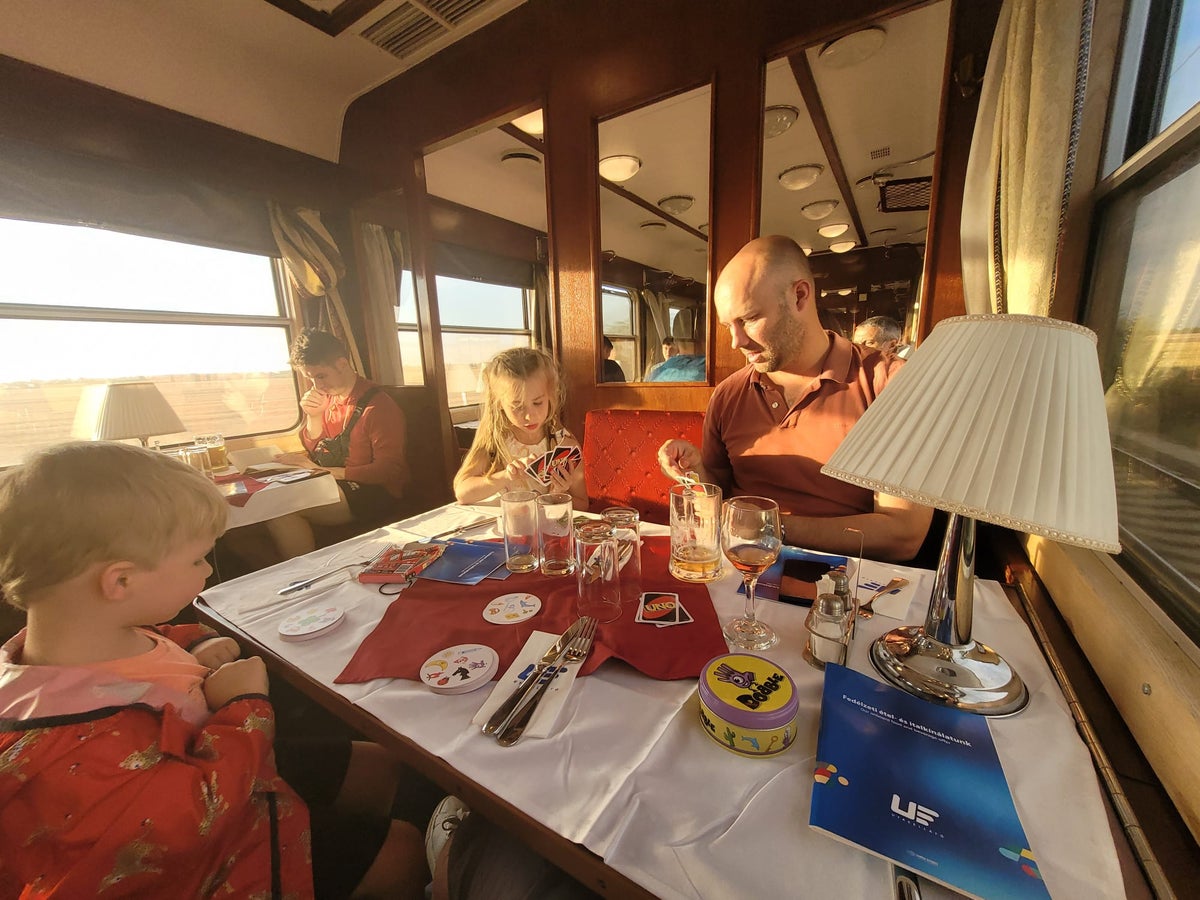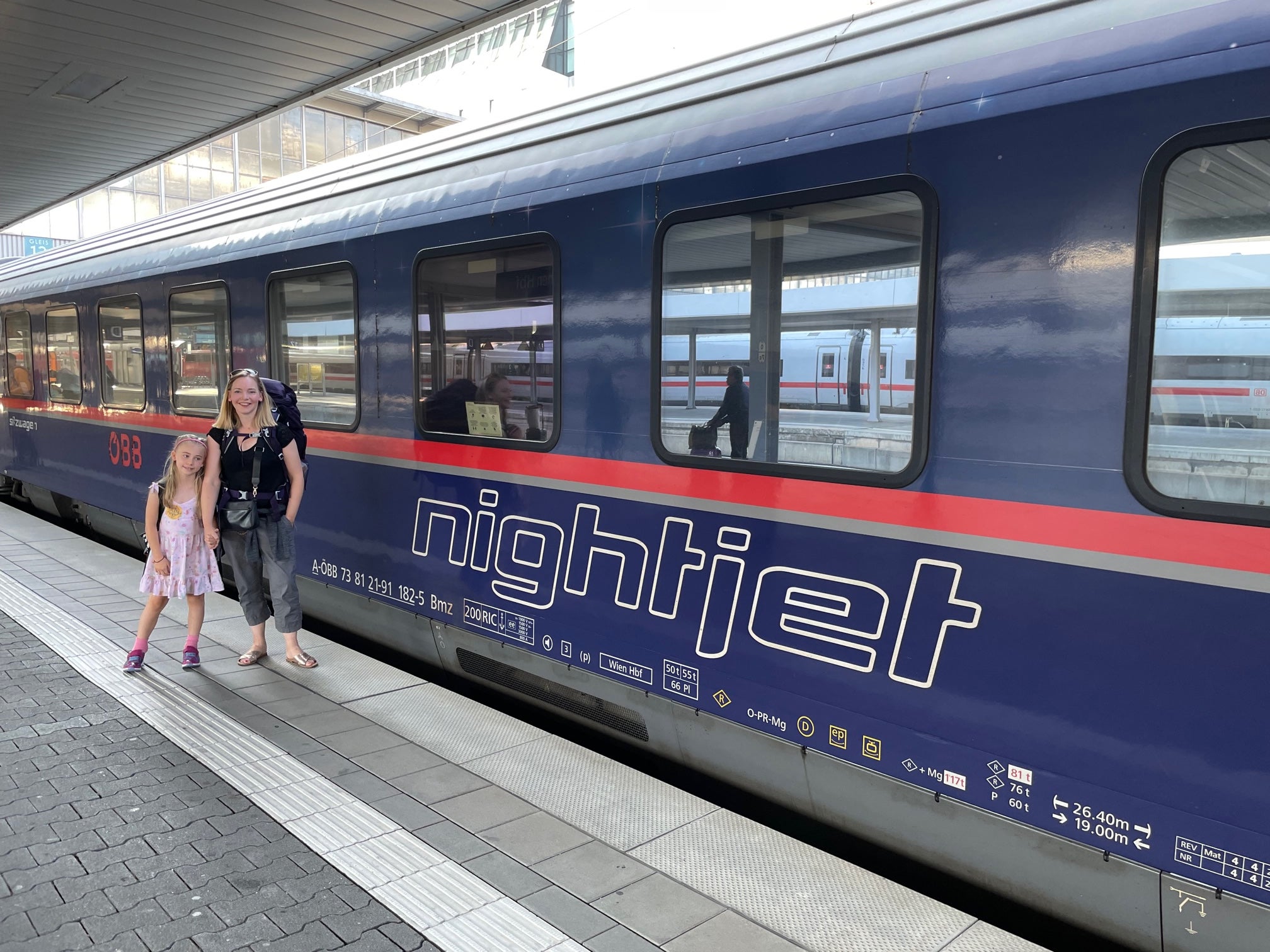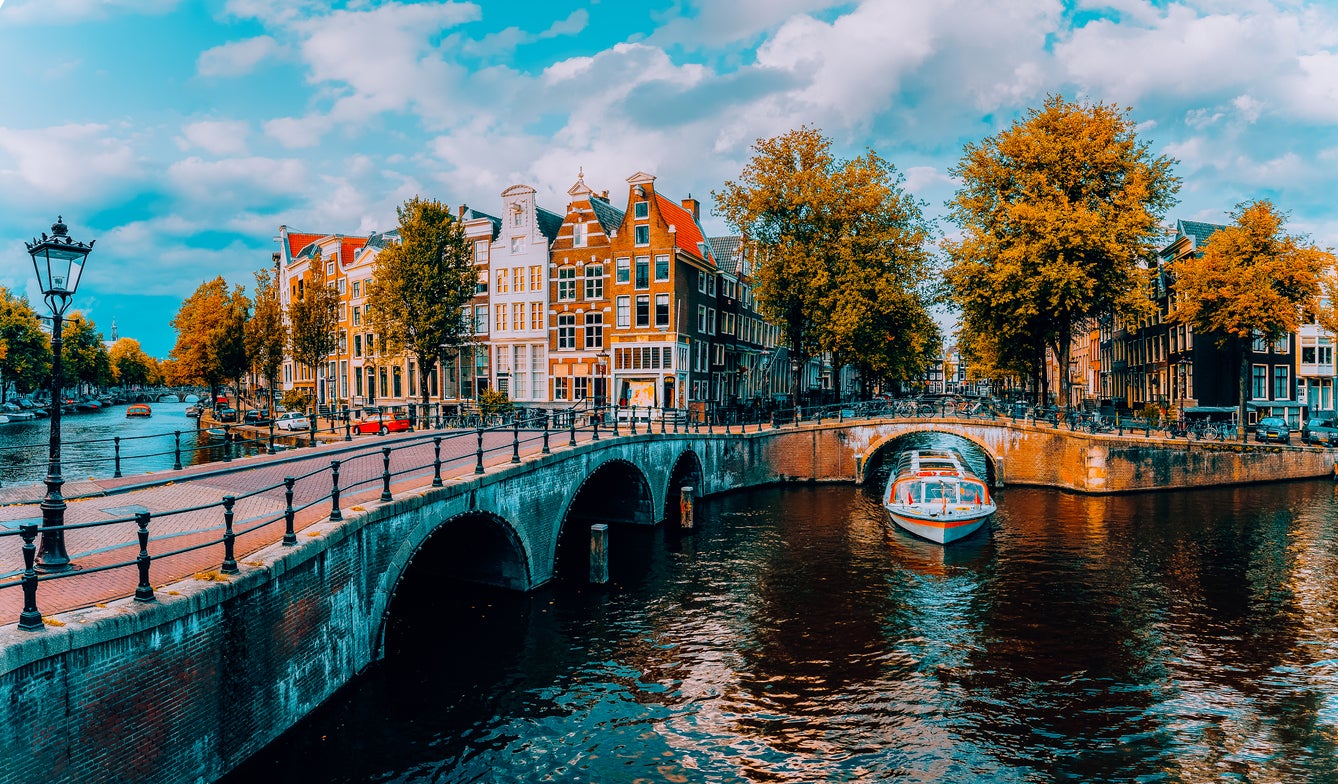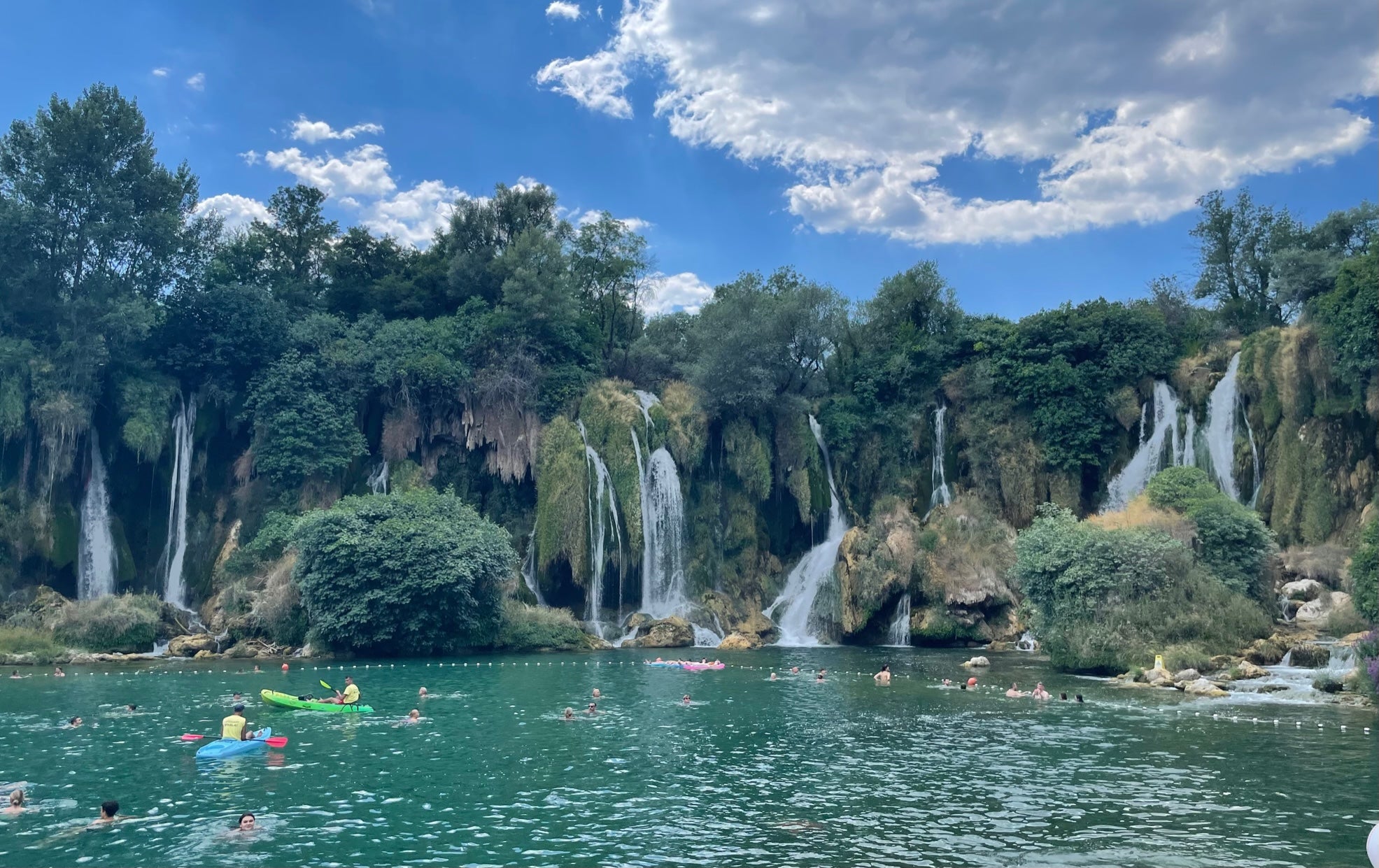
Our kids, aged seven and four, love a sleeper train. So when my wife and I settled upon a resort in the beach town of Ulcinj, Montenegro for our family summer holiday, I immediately started to research the possibilities of getting there by rail. It would be no mean feat, but an overland journey was possible: London to Croatia via the Netherlands, Germany and Hungary, then down the Dalmatian coast to Montenegro, nipping inland to Bosnia and Herzegovina on the way.
To some, that already looked like quite enough train time. But in my googling, I realised that just up the coast from the town of Ulcinj sits the port of Bar, the starting point for another train to Serbia – considered one of the world’s most beautiful rail journeys. It looked too good to miss, and we added it to the already circuitous route. We would spend three weeks travelling slowly across Europe by rail, before flying back from Belgrade in time for the resumption of school.
The process of setting off was surprisingly easy. As no sleeper trains run from the UK to Europe, we got ourselves to the continent by ferry, sailing overnight from Harwich, Essex, to the Hook of Holland. On the train to Harwich, our phones filled with headlines warning of wildfires across Europe; back home, temperatures in the UK had been threatening 40C, a dubious record. I felt a fleeting jolt of guilt that we were contributing to the all too evident climate crisis, as all travel does, but far less than usual given that we’d be visiting seven countries in one go by train, rather than flying to each across separate trips.
As I browsed headlines about UK holidaymakers’ lost baggage and long airport queues, I smugly recalled the ease of arriving at Harwich International, where we stepped off the train, breezed through the terminal and settled into our cabin within half an hour. This was already better than flying.

Sleeper trains connected our first four cities: Amsterdam, Munich, Budapest and Split. Our first leg wasn’t the most glamorous. We booked the Amsterdam-Munich train a little too late, so had to settle for a seating compartment, but the seats reclined fully, sliding down to meet in the middle, creating a wide, flat area on which to stretch out. If sleeping in a couchette compartment felt like a hostel, this was more like camping.
Still, at £85 for the family of four, it felt like a decent deal. An equivalent journey by air would have been nearly five times more expensive for four people with two checked bags. And we got a night’s accommodation thrown into the mix, not to mention a little adventure.
We allowed around 36 hours in each of the first three destinations, time enough to cover a fair bit of ground, see some sights and eat some local food. In Amsterdam we walked alongside the canals and through the flower market to the Van Gogh Museum, stopping to eat stroopwafel on the way.
Munich gave us the Englischer Garten, where we watched city surfers ride the surging waters of the Eisbach river, and the Augustiner-Keller beer hall, with its steins of cold lager (for the grown-ups) and well-kept playground (for Heidi and Barnaby). In Budapest, we spent hours at Palatinus public baths and pools on Margaret Island, then crossed the Danube and climbed the hill to Buda Castle, enjoying views of the city before getting lost in the spooky labyrinths that sprawl out beneath the medieval streets.

In each location we arrived directly into the heart of the city, without lengthy spells waiting by baggage carousels or queuing for taxis into town. We booked accommodation close to the main stations, enabling us to quickly drop our bags at our lodgings before setting off to explore. We found that when they saw a couple of kids under 10 in tow places often took pity on us, allowing us up to our room hours before the scheduled check-in time.
The trains were as much of a highlight as the cities we visited along the way. The Budapest to Split leg featured a restaurant car, the kids excitedly tucking into dinner as we enjoyed views of Lake Balaton. Where there were no supplies on board, we brought picnics with us and, after the kids were tucked up in their berths, my wife and I could settle into our top bunks, unscrew the lid of a local red and pass the bottle between us by way of a nightcap.
We’d made our train ticket bookings six weeks before travel, relying heavily on the website The Man in Seat Sixty-One for detailed information and advice on routes and rates. Booking earlier would have offered better availability and cheaper tickets, but, even at a couple of months out, we managed to get most of what we wanted sorted.
No trains run down the eastern coast of the Adriatic, so to get to our coastal haven we used buses and taxis to weave the rest of the way from Split to Ulcinj, via a few days in beautiful Mostar in Bosnia and Herzegovina. There we sat and watched brave Speedo-clad locals dive off the town’s iconic Stari Most into the chilly waters of the Neretva river 23 metres below, then caught a local train half an hour out of the city to take our own refreshing dip in the pools at Kravica falls.
Ulcinj was the perfect place to slow things down after a fortnight on the move. Between days splashing in the resort’s pools, we took short trips into the old town to explore the ruined citadel and learn about the region’s swashbuckling past at the Pirate Museum. Heidi and Barnaby drooled at the all-inclusive buffets, threw themselves into every activity going and, in the effortless way that children do, made new friends.

Relaxed, tanned and full of ice cream, we headed to Bar for the final train to Belgrade. Here, we met a hitch: two hours after the sleeper service’s scheduled departure, we woke to find we were still in the station. We went to sleep, expecting to be woken by the jolt of the carriages rolling out, but the morning view from our window was a brighter copy of that from the night before. Peering outside I noticed the helicopters, each with a large red container suspended beneath, heading to battle the wildfires spreading across the tracks further up the coast. As they say in the UK: rail replacement bus service, which for us meant a connection to Montenegro’s capital, Podgorica, still 10 hours by road from Belgrade. With the time lost on the cancelled train we found ourselves in danger of missing our flight home, so jettisoned the final leg of our trip, changing our tickets to fly back from Podgorica instead.
Despite the failed final journey, trains were a wonderful way to see Europe. We got to watch the continent change gradually as we travelled further south and east. Flat fields stretching out to a distant Dutch horizon became hill-backed riverbanks as we rattled along the Rhine, then ragged limestone peaks as we made it to the Balkans. Grey slate roofs and church spires stood out in the towns and villages we passed at the start of the trip; 2,000 miles later we were in a Europe of orange clay tiles and minarets.
The kids can’t wait to do it again, exploring new places, searching for our platform on the departure boards, falling asleep in their bunks and waking to find a new country hurtling past the sunlit window.
Getting there
How Dom and family did it:
Amsterdam to Munich was £85 for the four of us. Munich to Budapest came in at £155 in a four-berth couchette compartment. Budapest to Split – again in couchettes – was £145. Bar to Belgrade was £110 in couchettes. On each leg, the equivalent flight was at least double the price.







